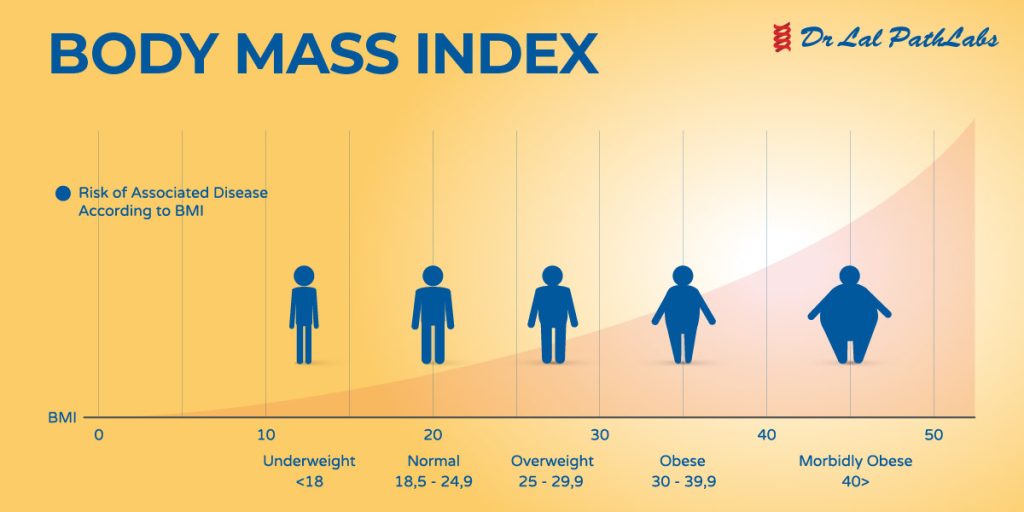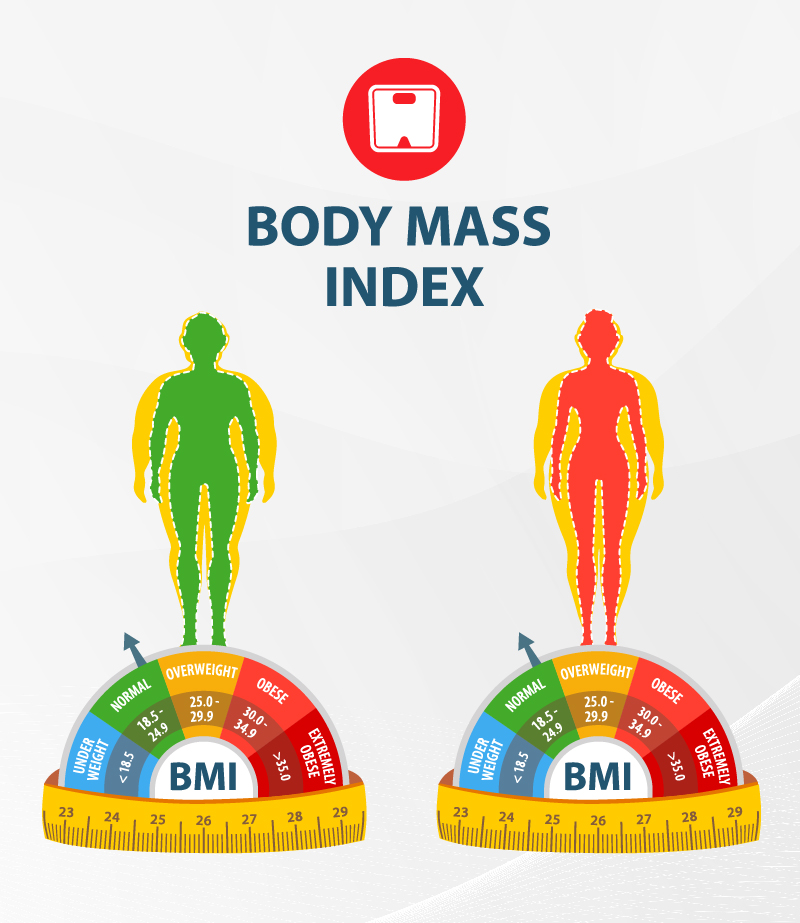
Key facts
- Body mass index (BMI) and waist circumference are measurements that you can use to see if you’re a healthy weight.
- Body mass index and waist circumference can be used to assess your risk of developing some health issues.
- In some populations, body mass index is less accurate.
What is body mass index (BMI)?
Body mass index (BMI) is calculated from your weight and height.
BMI is calculated by dividing your weight by the square of your height as follows:
BMI = Weight in kilos/Height in metres x Height in metres
You can find your BMI using the healthdirect BMI calculator. The calculator can give you an idea of any health risks related to your BMI or waist circumference. It also offers information based on your personal results.
Once you know your BMI, you can find your weight classification.
For adults, the BMI ranges and classifications are:
- BMI under 18.5: underweight
- BMI between 18.5 and 24.9: healthy weight range
- BMI between 25.0 and 29.9: overweight
- BMI equal to 30.0 or above: obese
Your BMI is a guide to tell you if you are the correct weight for your height. Your BMI can give an indication of your chance of developing weight-related disease such as diabetes.
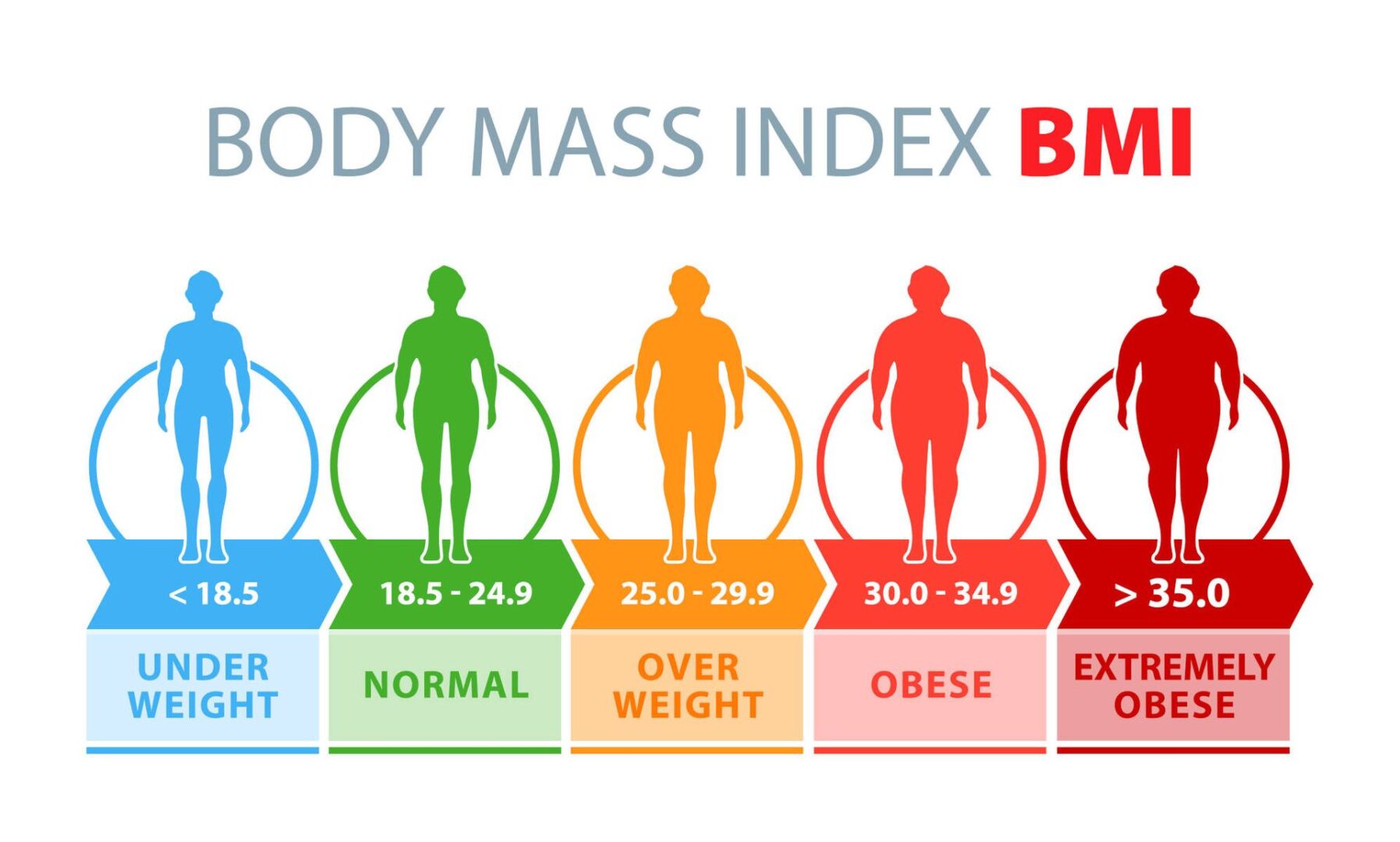
NEED TO LOSE WEIGHT? — Use the BMI Calculator to find out if your weight and waist size are in a healthy range.
What are the limitations of BMI?
BMI is not always accurate for assessing healthy weight in some people. It can’t tell what amount of weight is due to fat or muscle.
BMI is less accurate in the following groups of people:
- certain ethnic groups:
- Pacific Islanders
- Aboriginal and Torres Strait Islander peoples
- Maori people
- South Asian people
- Chinese people
- Japanese people
- body builders or weightlifters
- some high-performance athletes
- pregnant women
- people with a physical disability
- people under 18 years
Why measure waist circumference?
People carry fat in different parts of their bodies. Some people carry extra body fat around their middle. This is more of a health risk than carrying weight on your hips and thighs.
Waist circumference is a better estimate of ‘visceral fat’. This is the dangerous internal fat that coats your organs.
Measuring visceral fat can give a more accurate predictor of some health conditions. These include:
- cardiovascular disease risk
- metabolic syndrome
- type 2 diabetes
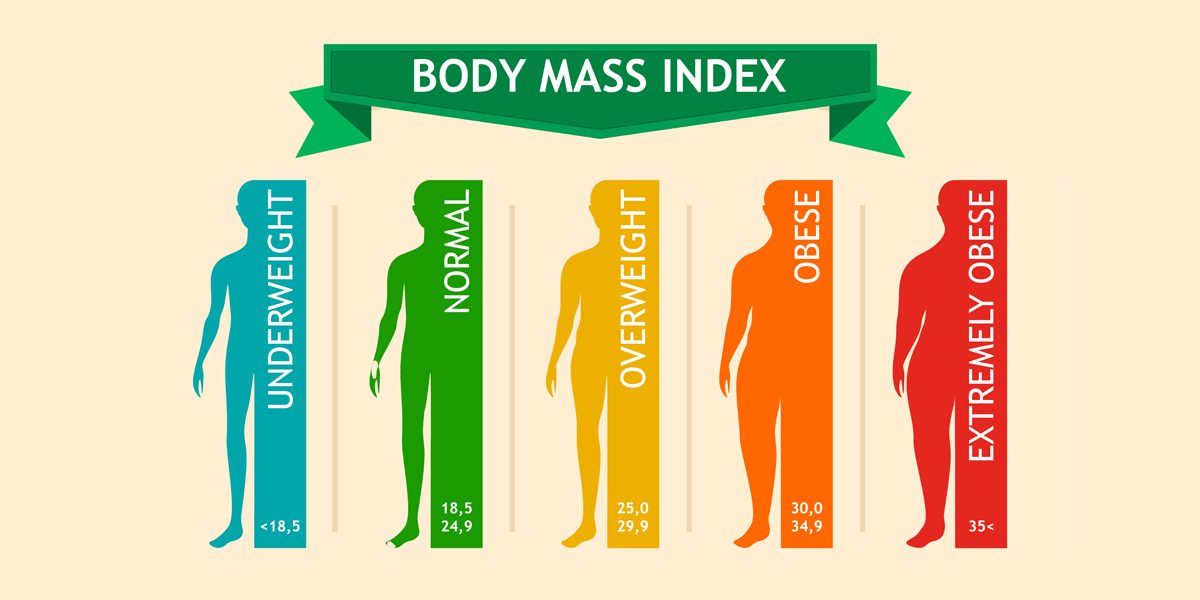
How do I measure my waist circumference?
To find your level of risk, it’s important to measure your waist circumference accurately.
- Place the tape measure directly on your skin. You should not wear more than one layer of light clothing.
- The correct place to measure your waist is halfway between your lowest rib and the top of your hipbone. This is roughly in line with your belly button.
- Breathe out normally and measure.
- Make sure the tape is snug, without squeezing your skin.
Waist circumference is less reliable in overweight and obese people.
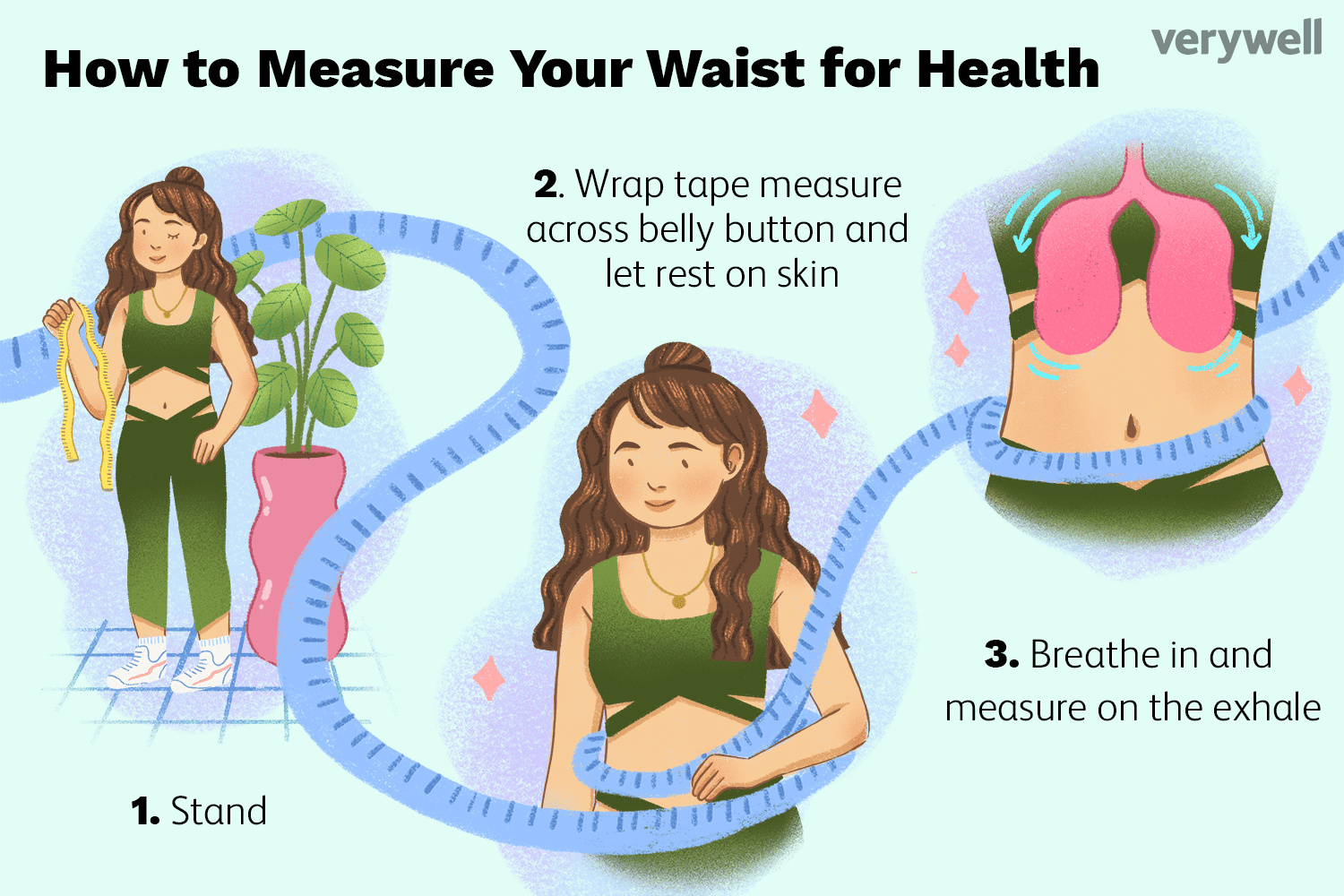
Waist circumference and disease risk
These are the waist circumference thresholds that indicate an increased risk of disease:
If you are a female:
- your risk is increased if your waist measurement is 80 cm or more
- your risk is greatly increased if your waist measurement is 88 cm or more
If you are a male:
- your risk is increased if your waist measurement is 94 cm or more
- your risk is greatly increased if your waist measurement is 102 cm or more
Limitations of waist circumference
These waist circumference measurements only apply to adults. They don’t apply to:
- children
- pregnant people
- people with a medical condition where their abdomen (tummy) is very enlarged
- people from certain non-European backgrounds
These groups may have a different body shape.
What does being overweight or obese mean?
Overweight and obesity are health conditions of excess weight. They often result from eating too much food and/or not doing enough physical activity.
Certain medicines and medical conditions can also cause weight gain.
Being overweight or obese can cause many serious health problems.
More than 6 in 10 Australian adults are overweight or obese. That number is rising.
What are the health risks of being overweight or obese?
Being overweight, especially being obese, can increase your risk of developing serious health problems, including:
- type 2 diabetes
- high blood pressure
- cardiovascular disease
- sleep apnoea
- osteoarthritis
- some cancers
Many of these diseases can be prevented by having a healthy weight and a healthy lifestyle. This includes eating a well-balanced diet and doing regular physical activity.
Even small amounts of weight loss (as little as 5%) can bring health benefits. These benefits can be a lower your risk of getting heart disease or type 2 diabetes.
ARE YOU AT RISK? — Are you at risk of type 2 diabetes, heart disease or kidney disease? Use the Risk Checker to find out.
How can I lose weight?
Probably the most successful way for weight loss is to make a change to your lifestyle. Try to eat food that is healthier and do more physical activity like exercise.
Psychological support can be important too.
For many people, reaching a ‘healthy’ weight is unrealistic. A weight loss of 5% (which means losing 5 kg if you currently weigh 100 kg) is more achievable. It will still result in important health improvements.
Your goals should focus on behaviour change and improved health, not weight loss.
Some people may need a more intensive approach. This can mean having a very low energy diet or taking weight loss medicine.
Some people may need bariatric surgery. This is especially likely in those who are obese or have other risk factors. It might be needed for people who haven’t been able to reduce their weight by changing their lifestyle.
How can I reduce my risk of disease?
Waist circumference and BMI are important indicators of risk. However, many other factors also contribute to disease.
There are several other ways to improve your health, including:
- quitting smoking
- Increasing your physical activity
- improving your diet
- reducing your alcohol intake
- treating other risk factors such as high blood pressure and high cholesterol
- ensuring you get enough sleep
Remember, increased physical activity and improved diet will help reduce your risk of disease. You may also have health benefits that are not directly related to weight loss.
